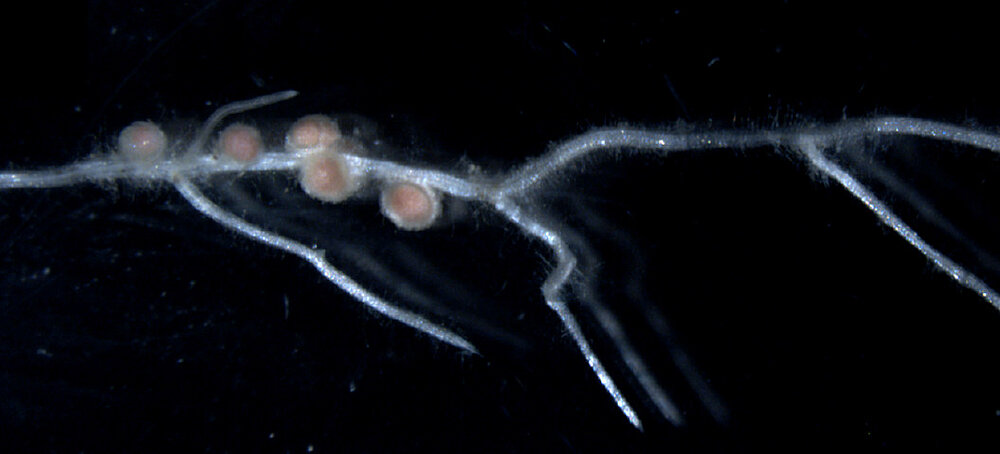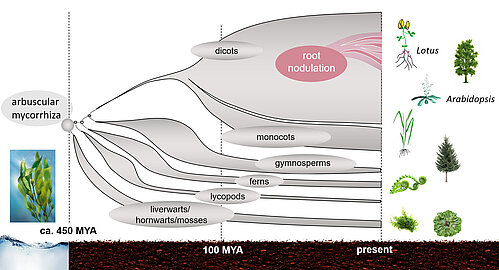The roots of root symbiosis
Focus:
The roots of root symbiosis
Project participants:
Christian Fröschel

Several genes required for nodulation symbiosis are equally important in the infection of plant roots with arbuscular mycorrhizal fungi. As the latter symbiosis is phylogenetically older, and is thus assumed to have served as a genetic template during the evolution of bacterial endosymbiosis.
Schematic phylogeny of land plants. Figure modified from Kistner and Parniske, 2002, doi.org/10.1016/S1360-1385(02)02356-7
However, significant developmental differences remain that set fungal and bacterial endosymbioses apart. The most apparent example is the organogenetic process leading to the formation of root nodules, which are restricted to N-fixing bacterial symbiosis and are absent in arbuscular mycorrhiza. We are interested in understanding the evolutionary origin of the genetic toolset underlying nodule organogenesis. In particular, we focus on regulatory modules integrating symbiosis with core developmental processes such as lateral root development, and ensuring a systemically balanced homeostasis of key mineral nutrients.









